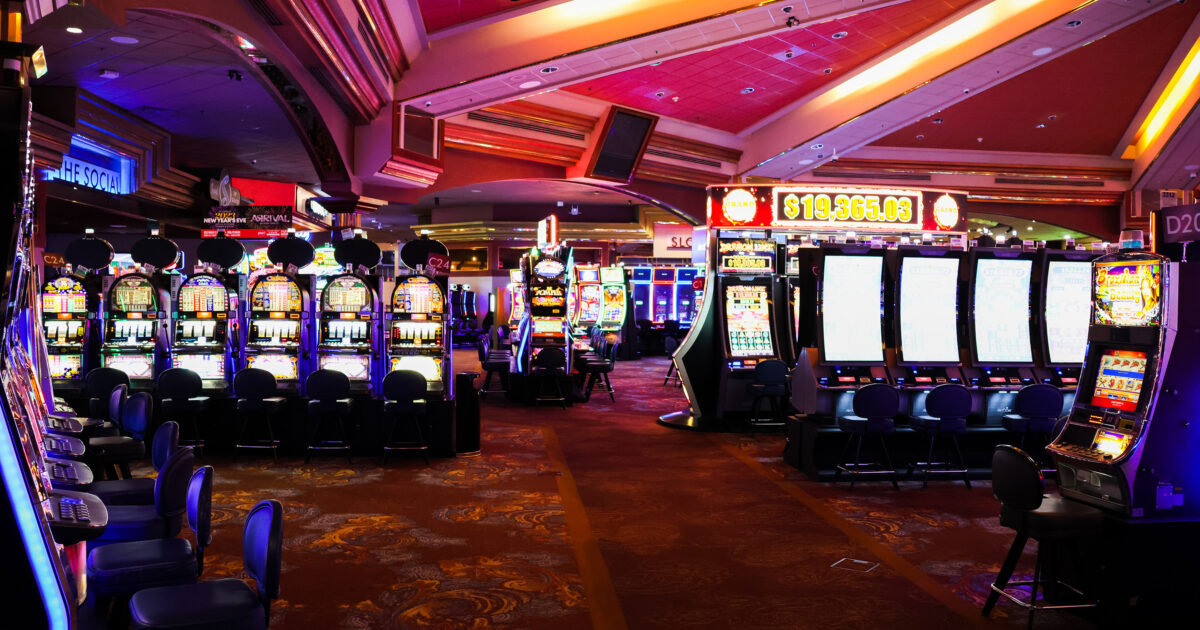The history of fruit machines is a captivating adventure that parallels the progress of entertainment and gambling across the years. Starting from their humble origins in the 1890s to growing into a mainstay in casinos throughout the world, these chance games have gone through notable changes. Slot machines have captivated players with their bright graphics, enticing storylines, and the hope of wealthy wins.
Originally designed as mechanical instruments with turning reels and limited symbols, slot machines have grown into cutting-edge digital games that incorporate modern tech and interactive components. Today, they attract millions of players, each wanting to strike it lucky with just the yank of a lever or the tap of a tap. Delving into the intriguing background of these games discloses not just the story of a beloved hobby, but also a mirror of social evolution and technological advancements over the decades.
One of the Beginnings of Slot Machines’ History
The story of slot machines originates in the final years of the 19th century, a time when mechanical devices were increasingly popular in places of amusement. The first true slot machine was invented by Charles Fey in 1895, referred to as the Liberty Bell. It featured 3 spinning reels and five symbols: hearts, diamonds, spades, a horseshoe, and the famous Liberty Bell. Players would pull a lever to spin the reels, and if the symbols matched in a specific combination, players won a payout. Fey’s invention rapidly captured the attention of gamblers and set the foundation for future developments in casino slots games.
As the idea of the slot machine gained popularity, various inventors looked to enhance Fey’s design. By the early 1900s, these machines were becoming a frequent presence in saloons and amusement parks. In 1907, the initial electromechanical slot machine was introduced by Herbert Mills, featuring a more intricate system of payout mechanisms and the renowned fruit symbols that are still linked to slots today. This evolution marked a significant shift in the gaming industry, as machines became more entertaining and user-friendly, drawing in more players.
The popularity of slot machines continued to soar throughout the early 20th century, leading to their widespread adoption in casinos across the United States. However, as legal restrictions on gambling during the Great Depression presented challenges for the industry. Many machines were outlawed, but this did not stop innovators. Instead, they adjusted by creating machines that dispensed candy or gum instead of cash prizes, effectively circumventing the restrictions while still offering the thrill of a casino slots game. This creativity kept the spirit of gambling alive, setting the stage for the eventual resurgence of slot machines in modern casinos.
Development of Gambling Machine Innovation
The background of gambling machines started in the late 19th century with the invention of the initial mechanical machines. Charles Fey, a West Coast mechanic, presented the Liberty Bell slot machine in 1895, which included three rotating reels and five icons: heart shapes, diamonds, spade symbols, a horseshoe, and the bell symbol itself. This straightforward yet captivating design laid the basis for the evolution of casino slots game, creating an instant attraction for players looking for excitement and a chance to earn.
As innovation progressed, so did the appearance and functionality of gambling devices. By the mid 20th century, electronic mechanical machines appeared, incorporating electric parts to enhance gameplay and amplify payout opportunities. These improvements allowed for greater complexity features like several paylines and larger jackpots. The gaming establishments welcomed these developments, causing the growth of gambling devices as a major provider of profits within the casino business, fundamentally changing the casino slots game experience.

The late 20th and early 21st hundred years heralded the digital revolution, causing the introduction of digital slots. These gaming units replaced traditional reels with monitors, permitting even more imagination in themes and gameplay mechanics. Gamblers could now experience engaging graphics and sound effects, along with interactive bonus rounds. The transition to web-based gaming further revolutionized the gambling world, rendering slots accessible to a global audience whenever and anywhere, thus marking a new era in the development of slot machine advancements.
A Social Impact of Gaming Machines
Slot machines have become not only a form of entertainment; they have woven themselves into the essence of mainstream culture. From movies and television shows to music and literature, these iconic gaming machines often serve as emblems of chance and gambling. https://Ga179.xyz/ Films like The Casino and Ocean’s 11 notably feature slots, portraying them as thrilling yet unpredictable elements of the casino atmosphere. Their unique attraction lies in the noise of coins falling, the revolving reels, and the vibrant flashing lights, which in unison create an electric atmosphere that draws people in.
In addition, slot machines have influenced social gatherings and events, making them a centerpiece in casinos and gaming venues. Many people do not just go to a casino to gamble; they attend for the entire experience, which encompasses the social interactions and the vibrant ambiance surrounding these machines. Special contests and themed gaming nights centered around slots also highlight their popularity, fostering community engagement and collective fun among players. This social element has contributed to the machines’ enduring popularity.
The evolution of technology has also transformed this cultural impact. Digital and online slots have expanded access to these games far beyond the walls of physical casinos. Players can now get their favorite casino slots game from home or on the go, leading to the rise of online communities and forums where enthusiasts share strategies and experiences. The continuous innovation in game design and the integration of storytelling have kept the cultural significance of slot machines alive, attracting new generations of players while maintaining a tie to their cultural roots.